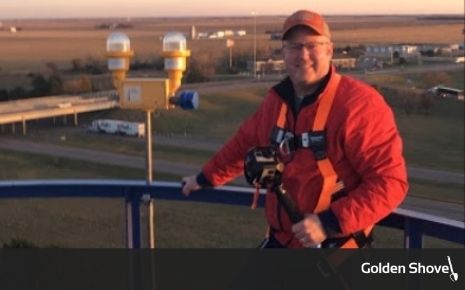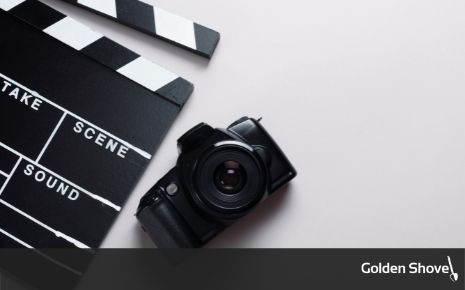DIY vs Professional 360-Degree Video Production

22 Sep 2023
News, Video
What are the Differences Between DIY & Professional Production?
How hard can it be to create a 360-degree video? Just buy a camera, a tripod, some software and you’re all set up. Right? Unfortunately, the signs of a DIY 360 video can be all too obvious. As the viewer, the camera angle makes you feel like a giant – or an ant. As you look around, the color balance of the scene changes as you go from sunlight to shade. What you’re hearing from the narration doesn’t connect with what you’re seeing, and even worse, a car goes down the street from north to south but the audio sounds like it’s going south to north.
All of these imperfections add up to interrupt the experience of the video and distract from the message which is the exact opposite effect that you’re going for when you’re using 360-degree video and virtual reality to gain the attention of site selectors, investors, potential residents, and visitors.
The tools that are needed to create 360-degree (or spherical) videos are readily available but that doesn’t mean that you’re going to get a great product without knowing how to master the tools. With a hammer and nails you might be able to build a storage shed but can you build a house? And are the tools that you bought even capable of the level of quality that you envision?
Tools, technique, experience, and mastery are all required to create the quality of 360-degree video that’s going to pull the viewer into the scene and deliver a message that will have an effect that lasts long after the virtual reality goggles are removed.
Let’s have a look at each of the three stages of 360-degree video production and explain some of the factors that separate the amateur to the seasoned professional.
Capturing 360-Degree Video
Positioning the Camera for Maximum Visual Impact
It’s not uncommon for 360-degree video rookies to approach shooting a scene in the same way that they approach a standard video shot. What results are scenes that contain random items that wouldn't normally be given attention or activities that divert the eye away from the message.
Greg Kolbjornsen is Golden Shovel Agency’s PlaceVR Executive Producer and Director. He has an extensive 30-year background in corporate and broadcast production and has been building on his expertise in 360-degree video production exclusively for the past three years with Golden Shovel Agency and PlaceVR.
“A common mistake that DIY 360 video creators often make is that they don’t take complete advantage of the spherical image that’s being recorded. It’s all about camera placement,” said Greg. “For example, you might have a beautiful shot of the exterior facade of a building but then you have an overflowing dumpster positioned to what would have been considered behind the camera but now in your shot. You need to consider what the entire 360-degree shooting radius is telling the viewer by what it is showing the viewer.”
You can sometimes hide or mask out unsightly items like a dumpster in a video if you have a skilled editor, but it’s always better to be aware of everything that’s going to be part of the captured scene. You also have to be conscious of how activity – such as people or moving vehicles - will add to or distract from the message.
Connecting the Scene to the Message
Produce with intent. When Greg is setting up to record footage on location, he’s considering how the scene will connect to the message. That means that he’s not only going to scout the best camera placement, but he may also direct the action of people who are present and let them help tell the story
“I was recently shooting a lake scene where there were but one boat and a long line of empty docks. Instead of featuring all the empty docks, I placed the camera next to the guy in that one boat, a fisherman who happened to be fishing in the marina - the only activity nearby. After asking if I could record him, he actually caught a fish right in front of the camera,” said Greg. “I have no problem going up to a perfect stranger and asking them to help out if it ultimately helps tell the story and send the viewer the intended message which in this case was available docking capacity and exciting action out on the water.”
Editing 360-Degree Videos Professionally
Massive Computing Power and Experienced Use of Software
If you don’t own a powerful computer with an abundance of memory and hard drive space, you’re going to fall short before you even get all your footage downloaded from your 360-degree cameras. More than likely your computer is going to crash.
If you manage to get all your scene files downloaded successfully, you'll need to know how to manage them. Remember that hammer? You can only build within the level of your skill and the same is true for the tools used to edit 360-degree video.
Benjamin Watkins is a video editor for Golden Shovel Agency’s PlaceVR division. He has a Master's degree in Motion Picture and Television with a focus in Producing and Directing. He also has a background in IT. He’ll admit that he’s a geek when it comes to the technology that he uses to craft 360-video into a finished product.
“I have a beast of a machine designed for this but I still had some modifications to make,” said Benjamin. “When I first tried using the software I had some problems that I solved by programming my computer to take in the data differently. I also needed to change some deep settings to make everything play nice.”
Editing Techniques Weave Components
Part of Benjamin’s craft is in turning multiple scenes into one by stitching them together so that the seams aren’t noticeable. He adjusts luminance and color balance so that whether you’re looking into a sunlit or shaded area, there’s consistency and accuracy. Mixing audio is an art all by itself, starting with knowledge of the correct way to export the audio from the camera to audio levels working together without distraction. There is no substitute for accurate narrative, music, and effects levels working together to add to the message, not to distract.
The PlaceVR editing team uses other technologies to add detail and take the message a step further. 3D renderings of buildings can be overlayed to give a sense of how a piece of land might be utilized. Text, labels, maps, and other graphics are used to emphasize construction information.
“If you see flat text in a spherical video, you’re going to know right away that it’s not professional,” said Benjamin. “You have to make graphics look and feel like they’re living in the 3-dimensional space.
Creating Development and Script Writing
Marking the Message Concise Yet Complete
When you’re showcasing a community with 360-degree video and virtual reality, your goal is not to give people a tour of everything you’ve got, but to instead give them a taste. It’s often hard to pare down all of the possible shooting venues and decide what to include and that’s another signal that you’re looking at an amateur or professional video.
A professional 360-degree video is concise. It doesn’t wander around or get stuck in one place. The narration carries the viewer from one scene to the next while covering all of the categories of decision drivers that are going to speak to the target audience.
According to Lori Creighton, Script Writer for PlaceVR, the hardest thing about writing the narration for a 360-degree video for economic development is that you have to say a lot with a few words.
“Each scene has only one, two, or three sentences that go with it, so you have to be creative with language,” said Lori. “At the same time, you have to find opportunities to pull in information that is going to amplify the experience of what the viewer is seeing in the scene.”
Professional Process is Efficient and Focused on the Message
Another difference between DIY and professional 360-degree video is the process that takes a project from concept to finished product. A lack of process or insufficient planning usually results in a disjointed video that doesn’t hold the viewers’ attention and wastes resources.
A professional 360-degree video is focused on the objective and the message right from the start of the project. The creative development that takes place as the script is drafted is essential to providing direction for the shoot.
“I’ve seen the lightbulb go on when a client sees the first draft of the script for their Familiarization Tour,” said Lori. “We’ve been talking about possible venues for shooting. We’ve talked through all of the information. When they see the script it all makes sense and we only got there because we’ve been guiding them through all the steps.”
The Cost of the DIY Learning Curve
Just as putting a hammer in your hand doesn’t make you a carpenter, acquiring the tools of the 360-video trade are not going to result in a quality product unless you want to climb a steep learning curve in shooting, editing, and creative development.
Even if you have someone on your team who is a whiz at video editing, it still makes sense to outsource this capability. Technology is evolving quickly, and 360-degree video professionals are staying up to date not only with their knowledge and expertise but with their investment in tools that cost many thousands of dollars to purchase and maintain.
Need to Reach People Without Traveling?
If you’re an economic development leader who can’t wait for COVID-19 concerns and travel restrictions to lift to attract and engage with site selectors and investors, then it’s time to talk explore PlaceVR 360-degree video. Not only can we create a professional 360-degree video that attracts attention, but we’ll also help you meet “face to face” with site selectors with our free virtual meetings app. Learn more at PlaceVR.net.
More Topics





